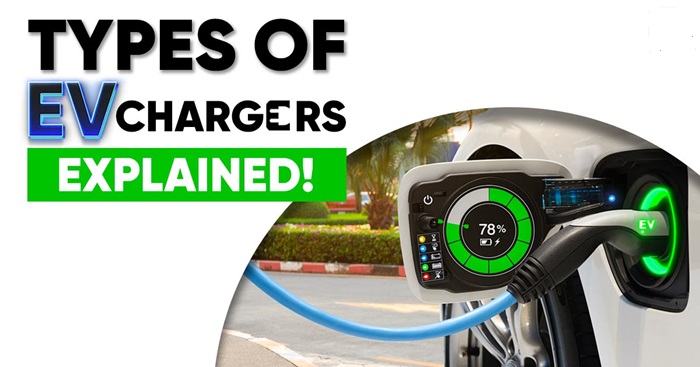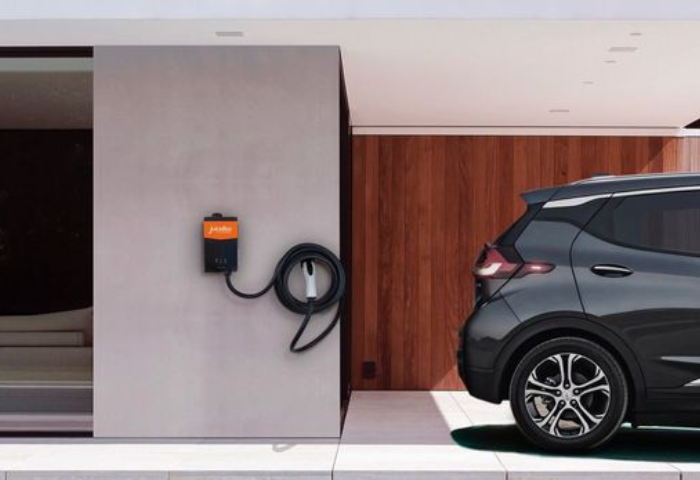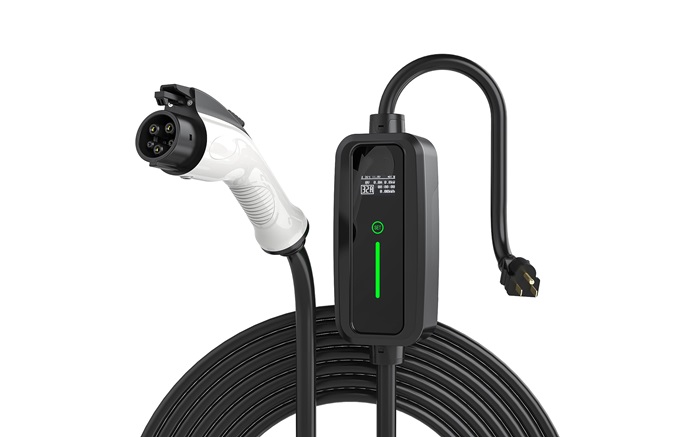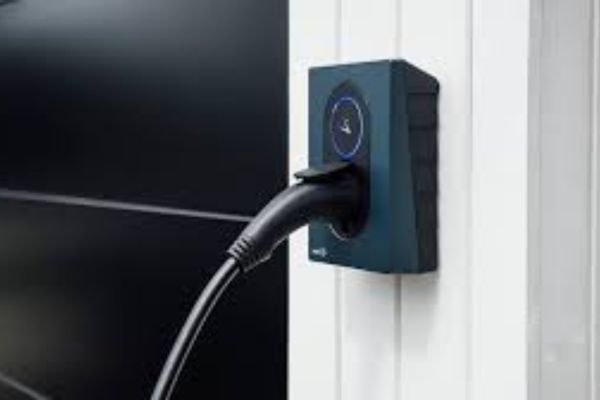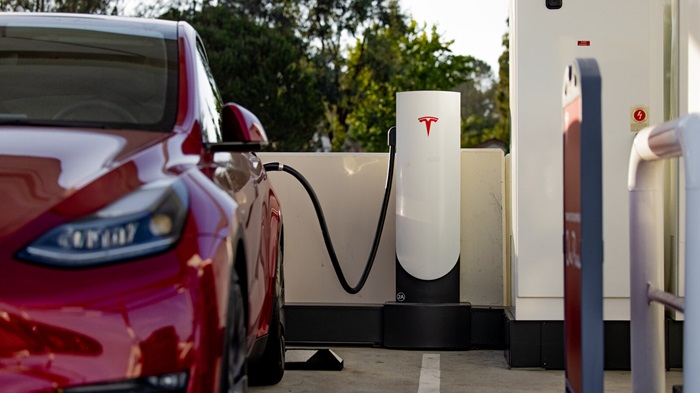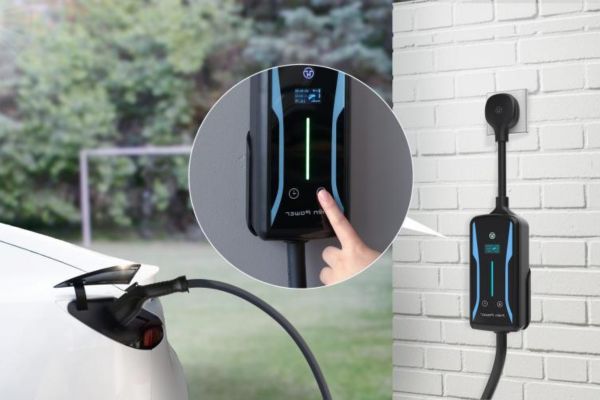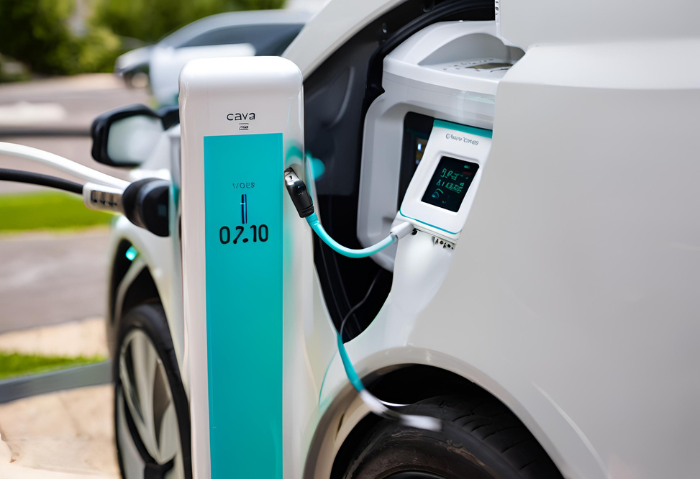Types of EV Chargers: Choosing the Right One for You
Electric vehicle (EV) chargers come in various types, each with its own charging speed and compatibility. When choosing a charger, consider your driving habits, your budget, and the availability of charging stations in your area.
1. Level 1 Chargers
Level 1 chargers (or Trickle charges) are the most basic type of electric vehicle charger, typically included with the purchase of an electric vehicle.
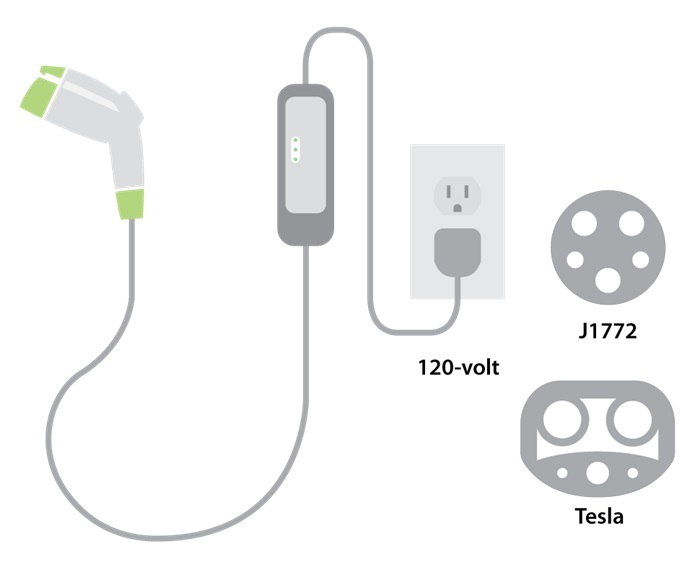
Power Source: Standard 120-volt household outlet (the kind you plug lamps or appliances into)
Charging Speed: The slowest charging option, adding around 3-5 miles of range per hour
Use Case: Ideal for overnight charging or topping off your battery when parked for extended periods. Not intended for quickly replenishing a depleted battery.
Pros: It is convenient if you have a garage and can plug it in at home overnight. No special installation is required.
Cons: Very slow charging speed. Not suitable for long trips or if you need a quick charge.
Additional Notes:
- Level 1 chargers typically provide 1.3 kW to 2.4 kW of power.
- A full charge from empty can take anywhere from 11 to 20 hours, depending on your battery size.
- It’s important to ensure your household circuit can handle the additional load of charging your car.
2. Level 2 Chargers
Level 2 chargers (or Fast chargers) are a step up from Level 1 chargers in terms of charging speed.
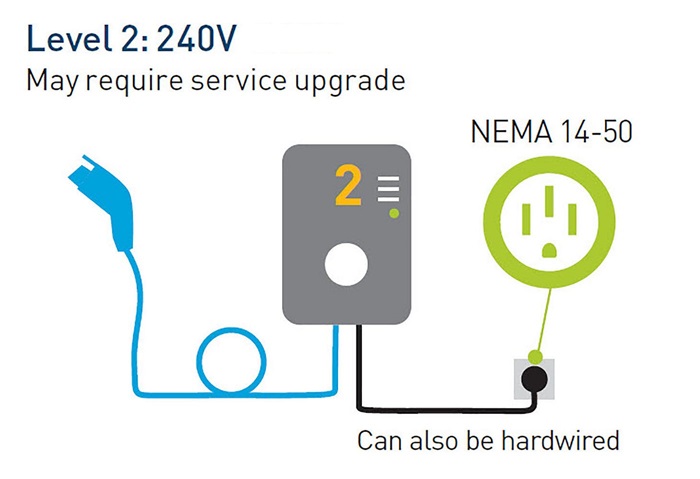
Power Source: 240-volt outlet (similar to what powers dryers or ovens)
Charging Speed: Significantly faster than Level 1, typically adding 25-50 miles of range per hour. A full charge can be achieved in 4-8 hours, depending on the battery size.
Use Case: Ideal for home charging and perfect for everyday use. It is well-suited for public charging stations where you might need a top-up before continuing your journey.
Pros: Much faster charging compared to Level 1. Convenient for home and public use.
Cons: Requires professional installation of a 240-volt outlet, which can add cost. Not as fast as DC fast charging (Level 3).
Additional Points:
- Level 2 chargers can deliver 7.2 kW to 19.2 kW of power, depending on the model and your electrical system.
- The higher power output translates to faster charging times but also necessitates a dedicated circuit to handle the increased electrical load.
- Level 2 is the most common charging option for both home and public use due to its balance of speed and convenience.
3. DC Fast Chargers
DC fast chargers (or Ultra-Fast Chargers) are the speed demons of the EV charging world.
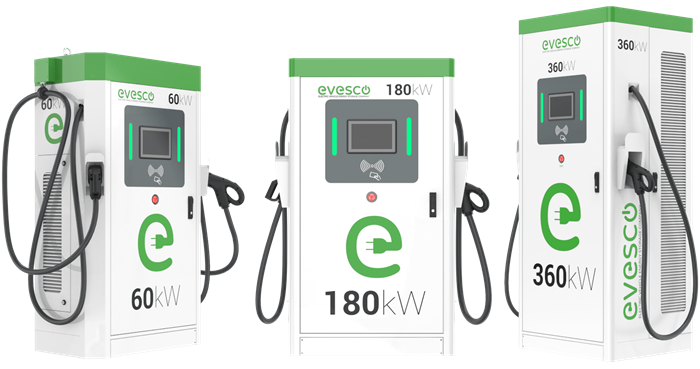
Power Source: High-voltage direct current (DC) electricity delivered by the charging station
Charging Speed: Blazing fast! They can provide up to 80% charge in 20-30 minutes, making them ideal for long trips or when you need a quick boost.
Use Case: Perfect for long road trips where you need to recharge quickly to get back on the road. Not intended for everyday home charging due to their cost and potential impact on battery health over time.
Pros: Incredibly fast charging times, ideal for long journeys.
Cons: Limited availability compared to Level 1 and 2 chargers. Typically, it is more expensive to use than other charging options. Frequent use of DC fast charging can potentially reduce battery lifespan.
Additional Points:
- DC fast chargers can deliver a whopping 50 kW to 350 kW of power, enabling rapid charging.
- They are most commonly found at commercial charging stations and along highways.
- While convenient, it’s recommended to rely on Level 1 or 2 charging for most everyday needs to optimize battery health and potentially save on charging costs.
4. Wall-Mounted Chargers
Wall-mounted chargers are a popular choice for home EV charging, and you’ve highlighted their key benefits.
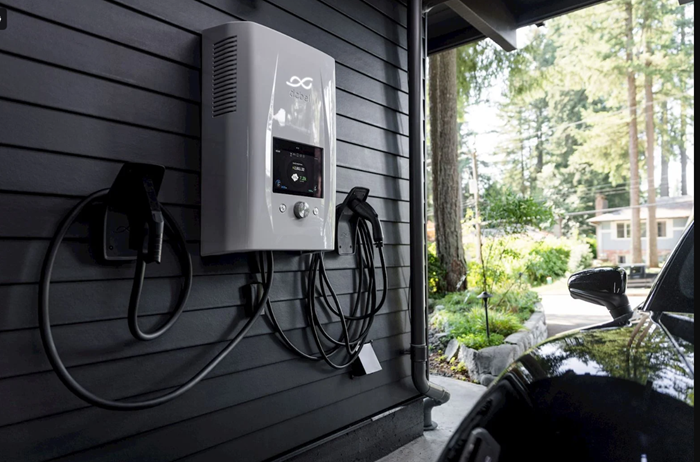
Design: Compact and space-saving, designed to be mounted securely on a wall in your garage or carport.
Installation: Relatively simple compared to other charging options, often requiring a qualified electrician to install a 240-volt outlet for Level 2 charging.
Use Case: Perfect for residential use, providing a convenient and readily accessible charging solution at home.
Compatibility: Wall-mounted chargers can support either Level 1 or Level 2 charging speeds, depending on the model and your electrical system.
Additional Points:
- Wall-mounted chargers come in various shapes and sizes, with some offering smart features like charging scheduling, energy use monitoring, and Wi-Fi connectivity.
- When choosing a wall-mounted charger, consider factors like your daily driving needs, available space, budget, and desired charging speed (Level 1 or Level 2).
- They offer a permanent charging solution at home, promoting convenience and potentially reducing reliance on public charging stations.
5. Portable Chargers
Portable chargers offer a unique advantage for EV owners: flexibility.
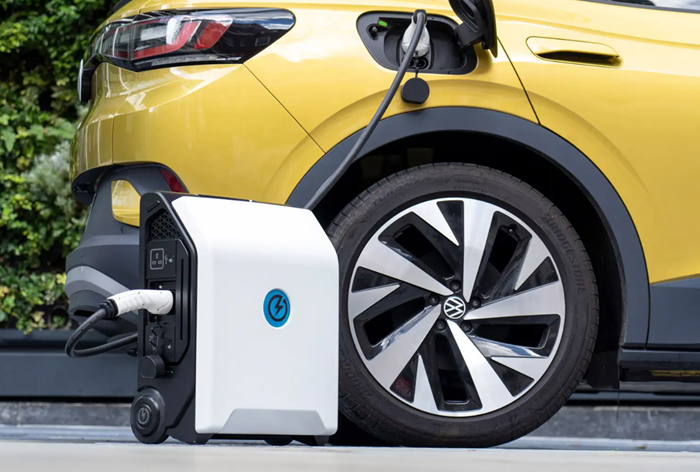
Advantage: Portability! These chargers can be easily transported in your vehicle, allowing you to charge in various locations if needed.
Use Case: Ideal as a backup charging option, especially for unexpected situations where you might run low on battery and a standard charging station isn’t readily available. They can also be useful for occasional charging at locations that lack permanent charging infrastructure.
Limitations: It’s important to remember that portable chargers typically aren’t powerful enough for a full charge. They provide more of a “range extender” function, adding enough charge to get you to a more robust charging station.
Speed: Portable chargers typically offer Level 1 or Level 2 charging speeds, but at a lower power output compared to wall-mounted chargers due to their portable nature.
Additional Considerations:
- Portable chargers come in various sizes and capabilities. Some are very compact and lightweight, while others offer more power but are less portable.
- They often plug into a standard 120-volt outlet (Level 1) or a 240-volt outlet (Level 2) depending on the model.
- While not a replacement for a primary charging solution, portable chargers can provide peace of mind and extra range security on the road.
6. Wireless Chargers
Wireless chargers are an emerging technology for EV charging, offering a futuristic approach but with some limitations.
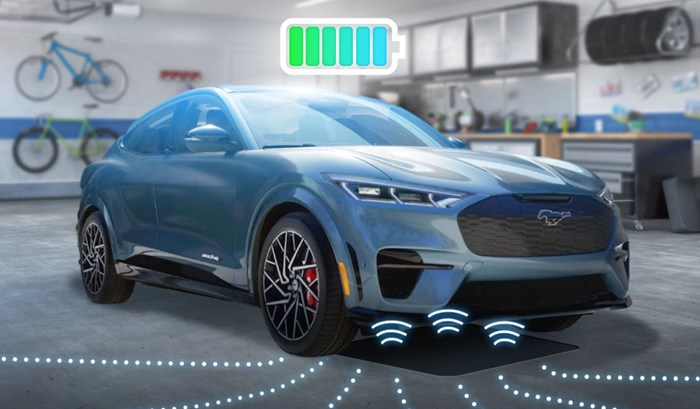
Concept: Eliminate the need for a physical cable connection between the charger and the car.
Technology: Utilizes inductive charging, where an electromagnetic field transfers energy from a charging pad on the ground or embedded in the pavement to a receiver plate installed on the underside of the vehicle.
Benefits: Provides a convenient and potentially more user-friendly charging experience. You simply park your car over the designated charging spot, and the charging process begins automatically.
Limitations:
- Range and Efficiency: Currently, wireless charging for EVs has a shorter effective charging range compared to wired connections. Precise alignment of the vehicle over the charging pad is necessary for efficient energy transfer.
- Availability: Wireless EV charging infrastructure is still in its early stages of development. Widespread adoption will require significant investment in public charging stations and modifications to existing parking spaces.
Additional Points:
- Wireless charging technology for EVs is still under development, but it holds promise for a more seamless and automated charging experience in the future.
- Some companies are exploring in-ground wireless charging systems where charging pads are embedded beneath the road surface, allowing for continuous charging while driving on designated lanes.
- While not yet a mainstream solution, wireless charging has the potential to revolutionize EV charging, offering greater convenience and potentially reducing wear and tear on charging connectors.
7. Home Chargers
Home chargers, also known as residential chargers or home charging stations, provide tailored solutions for charging electric vehicles at home.
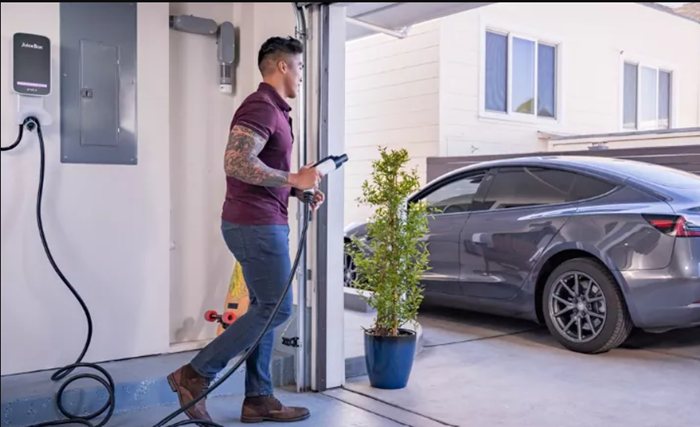
Function: Provide a safe, convenient, and efficient way to charge your electric vehicle at home.
Customization: Many home chargers offer customizable charging options, allowing you to set charging speeds, schedules, and even integrate them with smart home systems for automated charging based on electricity rates or peak usage times.
Safety Features: Home chargers typically come equipped with important safety features like surge protection, grounding, and temperature monitoring to safeguard your vehicle and your electrical system.
Types:
- Wall-Mounted Chargers: These are the most common type of home charger, offering a compact and space-saving design for permanent installation on a garage wall. They can support Level 1 or Level 2 charging.
- Portable Chargers: These chargers provide more flexibility as they can be easily transported and used in various locations. They typically offer Level 1 or Level 2 charging at a lower power output compared to wall-mounted units.
Additional Considerations:
- Power Source: Home chargers can be hardwired to your existing electrical panel (for Level 2 charging) or plugged into a standard 120-volt outlet (for Level 1 charging). It’s important to consult with a qualified electrician to ensure your electrical system can handle the additional load of EV charging.
- Charging Speed: The choice between Level 1 and Level 2 charging depends on your daily driving needs and how quickly you need to recharge your battery. Level 2 is significantly faster but requires professional installation.
- Smart Features: Smart home integration allows for features like remote monitoring, scheduling charging during off-peak hours to potentially save on electricity costs, and even voice control for added convenience.
8. Public Chargers
Public chargers are a crucial element in expanding EV adoption and enabling long-distance travel.
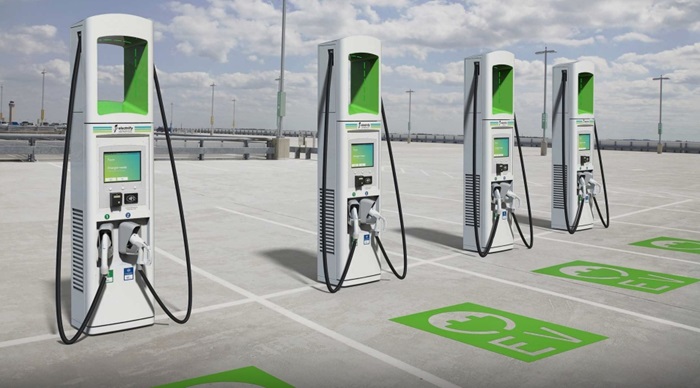
Location: Found in various public places with parking facilities, including shopping centers, restaurants, workplaces, airports, hotels, and highway rest stops.
Charging Speeds: Public stations typically offer a variety of charging speeds, including Level 2 (most common) and DC Fast Chargers (for quicker top-ups on longer trips).
Payment Options: Payment methods can vary depending on the charging network provider. Some stations require credit cards or memberships, while others offer contactless payment options or integration with mobile apps.
Accessibility Considerations: Public charging stations should be accessible for people with disabilities, with designated parking spaces and charging units that are easy to reach and use.
Additional Points:
- Network Providers: There are various public charging networks, each with its own stations, pricing schemes, and apps. Some popular networks include ChargePoint, EVgo, Electrify America, and Tesla Superchargers (exclusively for Tesla vehicles).
- Station Availability: The availability of public chargers can vary depending on location. Apps and websites from charging network providers can help you locate stations and check real-time availability.
- Urban vs. Rural Areas: Public charging infrastructure is often more concentrated in urban areas, although efforts are underway to expand access in rural regions as well.
9. EVSE Chargers
EVSE (Electric Vehicle Supply Equipment) is a perfect umbrella term that encompasses all the different types of chargers we’ve been discussing.
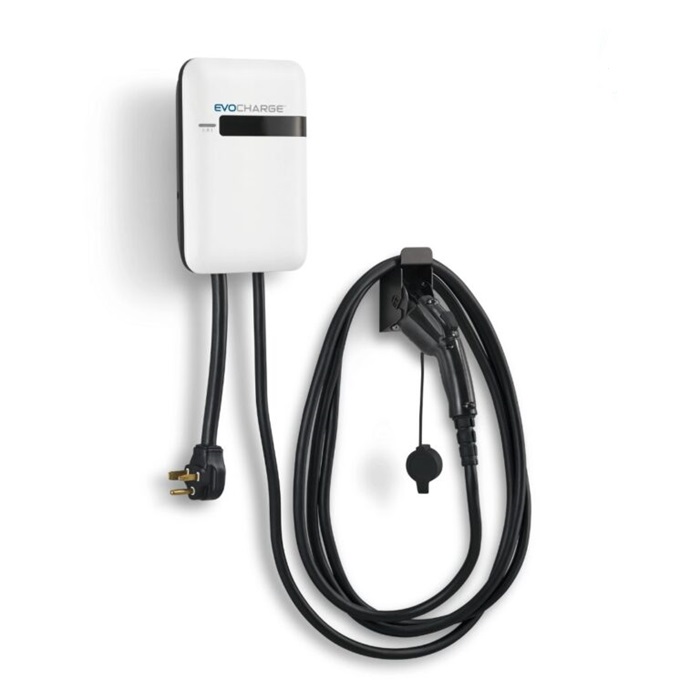
EVSE provides a safe and efficient connection between the electric grid and your electric vehicle (EV) for charging. It essentially acts as a translator, converting the high-voltage AC (Alternating Current) electricity from the grid into a form that’s compatible with your EV’s battery, which uses DC (Direct Current).
EVSE chargers come in various configurations to meet different needs:
- Home Chargers: wall-mounted or portable chargers for convenient charging at home.
- Public Chargers: Found in various public locations, offering Level 2 or DC Fast Charging options.
Compatibility: Most EVSE chargers are designed to be compatible with a wide range of EV models using common connector standards like J1772 (North America) and CCS (Combined Charging System – increasingly popular globally).
Safety Features: EVSE chargers incorporate essential safety features like surge protection, grounding, and temperature monitoring to safeguard your vehicle and the electrical system.
10. Networked Chargers
Networked chargers are a significant upgrade over standalone EVSE chargers, offering additional features and functionalities through a network connection.

Connectivity: These chargers are connected to a central network, often operated by the charging station provider. This network allows for remote monitoring and management of the charging station.
Remote Features: Network connectivity enables features like:
- Real-time status monitoring: You can check if a charger is available or in use through a mobile app or website.
- Remote start and stop: Some networked chargers allow you to remotely initiate or terminate a charging session.
- Usage data and billing: The network can track your charging sessions, providing data on energy consumption and facilitating automated billing.
Benefits for Station Owners: Networked chargers offer advantages for owners and operators as well:
- Centralized management: They can remotely monitor the health and performance of their charging stations, identify and address issues promptly.
- Dynamic pricing: Network operators can implement dynamic pricing structures based on factors like time of day or electricity demand.
- Data-driven insights: Usage data can be used to optimize station placement, improve maintenance planning, and gain insights into customer behavior.
Additional Considerations:
- Network Providers: Networked chargers typically operate under the umbrella of a specific charging network provider, similar to public chargers.
- Subscription fees: Some network providers may have monthly subscription fees for access to their networked charging stations.
- Benefits for EV Drivers: Networked chargers offer greater transparency and convenience for EV drivers, allowing them to plan their charging journeys more effectively.
In conclusion, networked chargers represent an advanced approach to EV charging infrastructure. They provide real-time information, remote control capabilities, and valuable data for both EV drivers and charging network operators. As EV adoption continues to grow, networked chargers are poised to play a key role in creating a more efficient and user-friendly charging experience.

Henry Michael is a leading expert in EV charging station research, specializing in innovative solutions for electric vehicle infrastructure. With a passion for sustainability and technological advancement, he is dedicated to advancing the accessibility and efficiency of EV charging worldwide.

